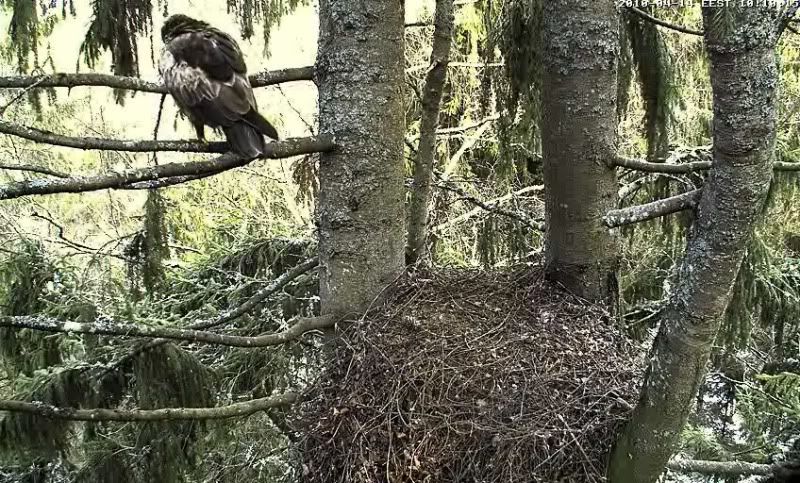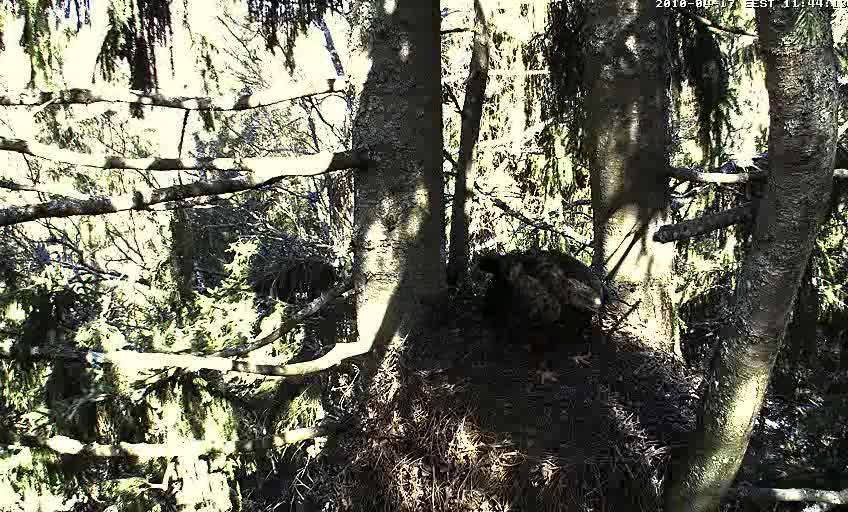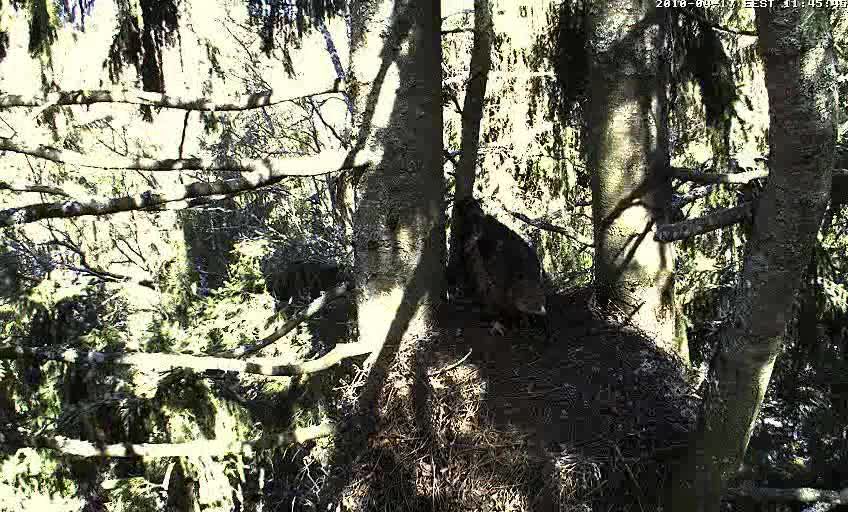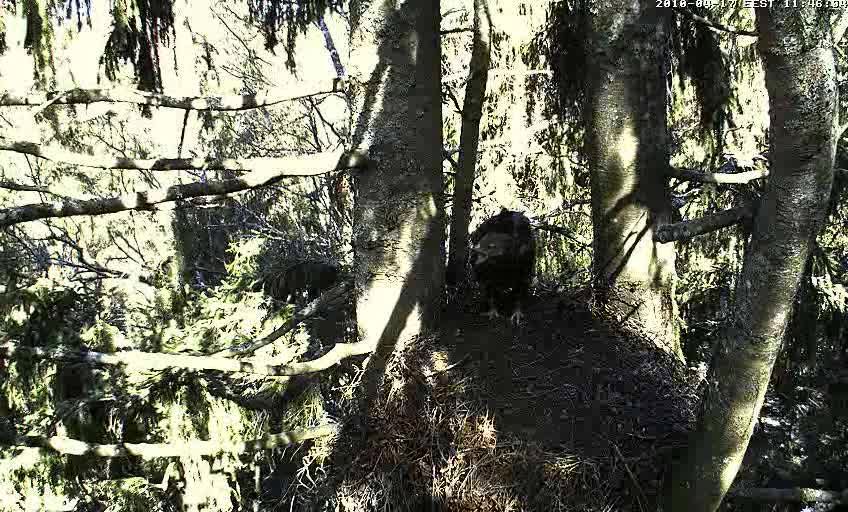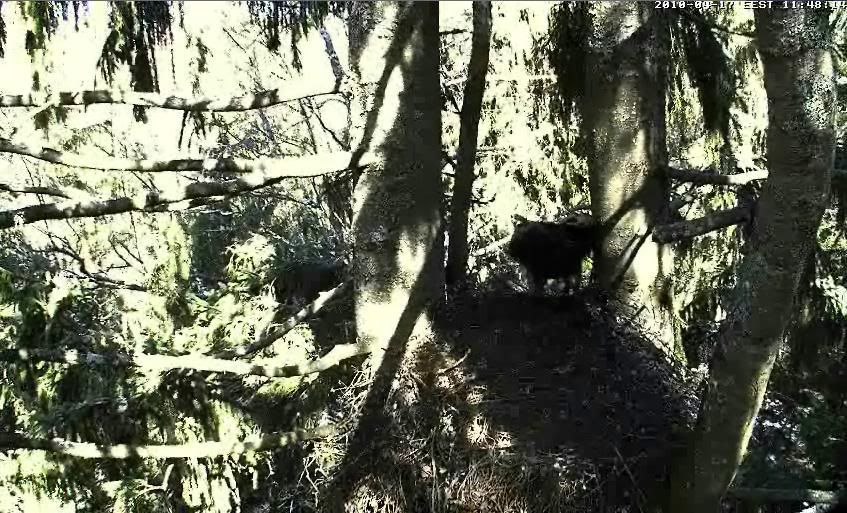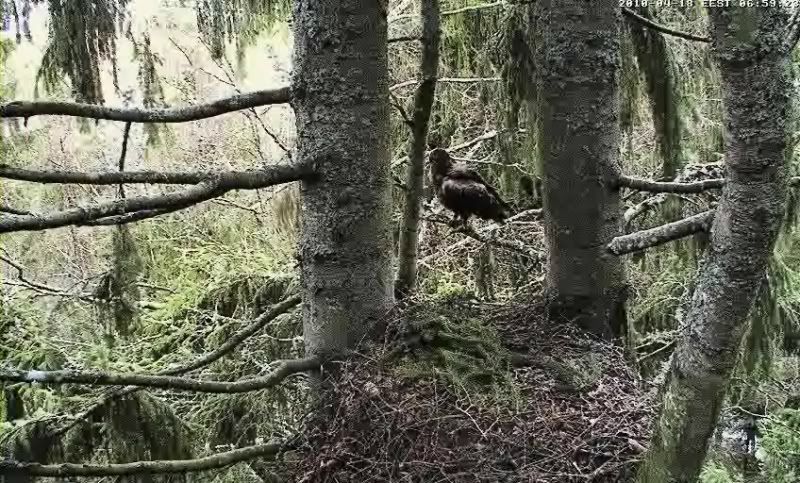This eagle is the most numerous eagle in both Europe and Estonia. Of all our eagles, the Lesser Spotted Eagle is the only one who has adjusted to the human cultural environment, but he still requires uncut forests for nesting and mowed meadows for food. The older birds' plumage is various shades of brown; young birds are more or less covered with light spots with legs feathered to the toes. (quoted from http://www.looduskalender.ee/en/node/158)
In 2008, the pair on this nest, now called Eha and Koit, did not produce eggs or young.
In 2009, Eha laid eggs on April 21 and April 25 and two chicks hatched. However, this species practices cainism, that is, if the older chick is doing well, the younger chick is not fed and does not survive. The older chick, called Spot, was banded and fledged from the nest. Spot was later found injured not far from the nest and was taken to a rehabilitation facility, where he was treated and ultimately released.

Picture of Eha, the mother, on branch and Spot on the nest, from 22 July 2009
For further reading:
Estonian: http://www.looduskalender.ee/node/7076
English: http://www.looduskalender.ee/en/node/7144
Older articles in English about the LSE are listed here: http://www.looduskalender.ee/en/node/3487
Ringing Spot: http://www.looduskalender.ee/en/node/4526
Discussion about cainism in birds: viewtopic.php?f=35&t=118
Direct link to webcamera: mms://tv.eenet.ee/konnakotkas
The microphone on this system picks up many noises that sound much closer than they actually are. There is a road about 200 m away and a railway about 3 km from the nest.

